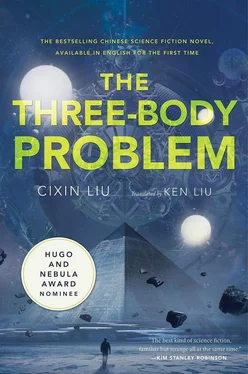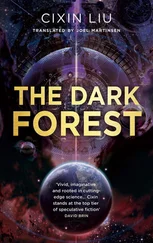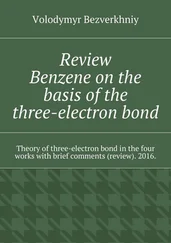No one looked at Wang, and Wang had no strength to express himself in any way. He had to pull at the sleeve of the man next to him so that he wouldn’t fall, but the man lightly brushed his hand away.
“Xiao Wang, why don’t I continue to tell you the story of Red Coast from last time? All the comrades here can listen too. This is not a waste of time. In this extraordinary moment, it is a fine time to review the history of our Organization.”
“Red Coast…. You weren’t done?” Wang asked foolishly.
Ye slowly approached the three-body model, seemingly absorbed by the swirling silver spheres. Through the broken window, the setting sun’s light fell on the model, and the flying spheres intermittently reflected the light onto the rebel commander, like sparks from a bonfire.
“No. I’ve only just started,” Ye said softly.
Since she entered Red Coast Base, Ye Wenjie had never thought of leaving. After she learned the real purpose of the Red Coast Project, top-secret information that even many mid-level cadres at the base didn’t know, she cut off her spiritual connection to the outside world and devoted herself to her work. Thereafter, she became even more deeply embedded in the technical core of Red Coast, and began to take on more important research topics.
Commissar Lei never forgot that it was Chief Yang who first trusted Ye, but Lei was happy to assign important topics to her. Given Ye’s status, she had no rights to the results of her research. And Lei, who had studied astrophysics, was a political officer who was also an intellectual, rare at the time. Thus he could take credit for all of Ye’s research results and papers, and cast himself as an exemplary political officer with both technical acumen and revolutionary zeal.
The Red Coast Project had initially requisitioned Ye because of a paper on an attempted mathematical model of the sun she had published in the Journal of Astrophysics as a graduate student. Compared to the Earth, the sun was a far simpler physical system, made almost entirely of hydrogen and helium. Though its physical processes were violent, they were relatively straightforward, only fusing hydrogen into helium. Thus, it was likely that a mathematical model of the sun could describe it rather precisely. The paper was basic, but Lei and Yang saw in it a hope for a solution to a technical difficulty faced by the Red Coast monitoring system.
Solar outages, a common problem in satellite communications, had always plagued the Red Coast monitoring operations.
When the Earth, an artificial satellite, and the sun are in a straight line, the line of sight from the ground-based antenna to the satellite will have the sun as its background. The sun is a giant source of electromagnetic radiation, and, as a result, satellite transmissions to the ground will be overwhelmed by interference from the solar radiation. This problem could not be completely solved, even in the twenty-first century.
The interference that Red Coast had to deal with was similar, but the source of interference (the sun) was between the source of the transmission (outer space) and the ground-based receiver. Compared to communication satellites, the solar outages suffered by Red Coast were more frequent and more severe. Red Coast Base as constructed was also much more modest than its original design, such that the transmission and monitoring systems shared the same antenna. This made the times available for monitoring even more precious, and solar outages even more of a problem.
Lei and Yang’s idea for eliminating interference was very simple: ascertain the frequency spectrum and characteristics of solar radiation in the monitored range, and then filter it out digitally. Both of them were technical, and at that time, when the ignorant often led the knowledgeable, that was a rare bit of fortune. But Yang wasn’t a specialist in astrophysics, and Lei had taken the path of becoming a political officer, which prevented him from accruing in-depth technical know-how. In reality, electromagnetic radiation from the sun is only stable within the limited range from near-ultraviolet to mid-infrared (including visible light). In other ranges, the radiation is quite volatile and unpredictable.
To set the right expectations, Ye made it clear in her first research report that during periods of intense solar activity—sunspots, solar flares, coronal mass ejections, and so on—it was impossible to eliminate solar interference. Thus, her research target was limited to radiation within the frequency ranges monitored by Red Coast during periods of normal solar activity.
Research conditions at the base weren’t too bad. The library could obtain foreign-language materials related to the topic, including timely European and American academic journals. In those years, this was no easy feat. Ye also could use the military phone line to connect to the two groups conducting solar science research within the Chinese Academy of Sciences and obtain their observation data by fax.
After half a year of study, Ye saw no glimpse of hope. She quickly discovered that within the frequency ranges monitored by Red Coast, solar radiation fluctuated unpredictably. By analyzing large amounts of observed data, Ye discovered a puzzling mystery. Sometimes, during one of the sudden fluctuations in solar radiation, the surface of the sun was calm. Since hundreds of thousands of kilometers of solar material would absorb any shortwave and microwave radiation originating from the core of the sun, the radiation must have come from activities on its surface, so there should have been observable surface activity when these fluctuations occurred. If there were no corresponding surface disturbances, what caused these sudden changes to the narrow frequency ranges? The more she thought about it, the more mysterious it seemed.
Eventually Ye ran out of ideas and decided to give up. In her last report, she conceded that she could not solve the problem. This shouldn’t have been a big deal. The military had asked several groups within universities and the Chinese Academy of Sciences to research the same issue, and all of those efforts had failed. But Yang wanted to try one more time, relying on Ye’s extraordinary talent.
Lei’s agenda was even simpler: He just wanted Ye’s paper. The research topic was highly theoretical and would show off his expertise and skill. Now that the chaos in society was finally subsiding, the demands on cadres were also changing. There was an acute need for men like him, politically mature and academically accomplished. Of course he would have a bright future. As to whether the problem of interference from solar outages could be solved, he didn’t really care.
But in the end, Ye didn’t hand in her report. She thought that if the research project were terminated, the base library would stop receiving foreign language journals and other research materials, and she would no longer have access to such a rich trove of astrophysics references. So she nominally continued her research, while in reality she focused on refining her mathematical model of the sun.
One night, Ye was, as usual, the only person in the cold reading room of the base library. On the long table in front of her, a pile of documents and journals were spread open. After completing a set of tedious and cumbersome matrix calculations, she blew on her hands to warm them, and picked up the latest issue of the Journal of Astrophysics to take a break. As she flipped through it, a brief note about Jupiter caught her attention:
Last issue, in “A New, Powerful Radiation Source Within the Solar System,” Dr. Harry Peterson of Mount Wilson Observatory published a set of data accidentally obtained while observing Jupiter’s precession on June 12 and July 2, during which strong electromagnetic radiation was detected, lasting 81 seconds and 76 seconds, respectively. The data included the frequency ranges of the radiation as well as other parameters. During the radio outbursts, Peterson also observed certain changes in the Great Red Spot. This discovery drew a lot of interest from planetary scientists. In this issue, G. McKenzie’s article argues that it was a sign of fusion starting within Jupiter’s core. In the next issue we will publish Inoue Kumoseki’s article, which attributes the Jovian radio outbursts to a more complicated mechanism—the movements of internal metallic hydrogen plates—and gives a complete mathematical description.
Читать дальше












